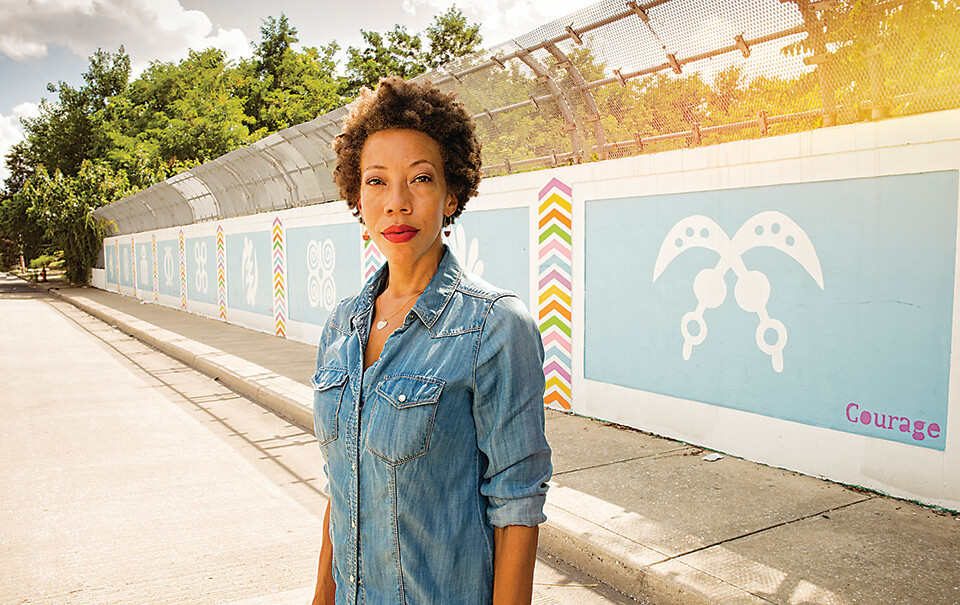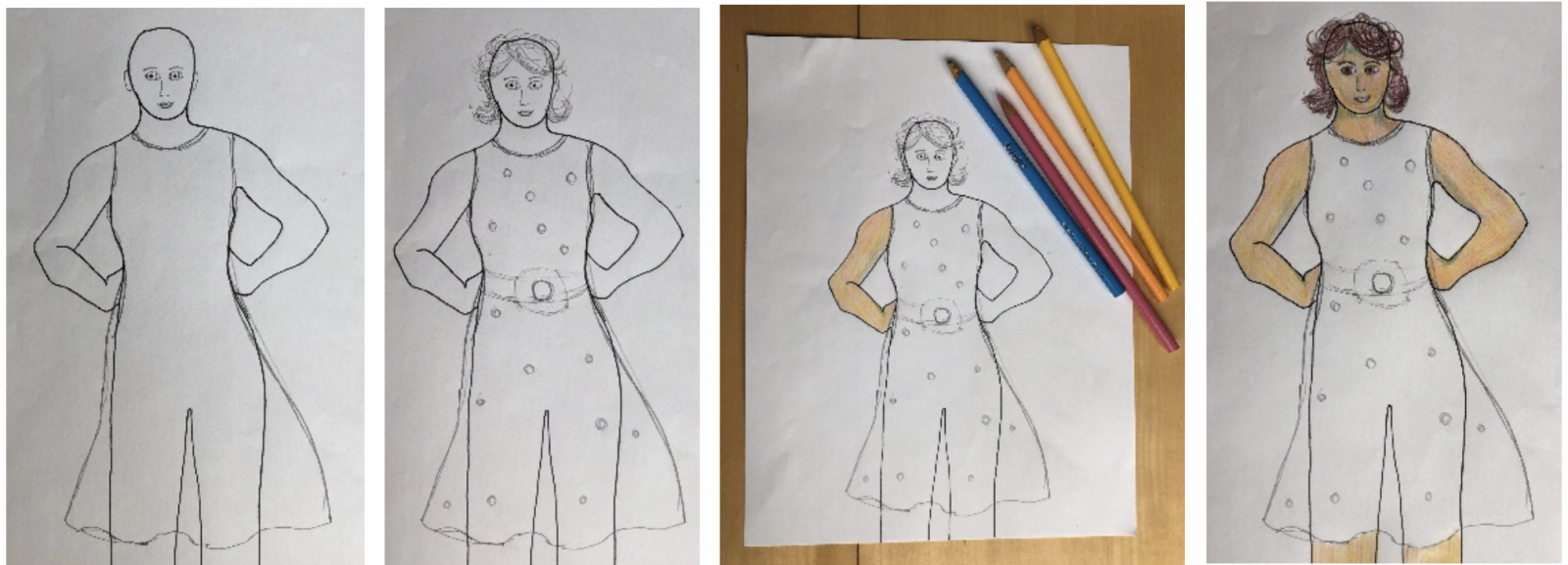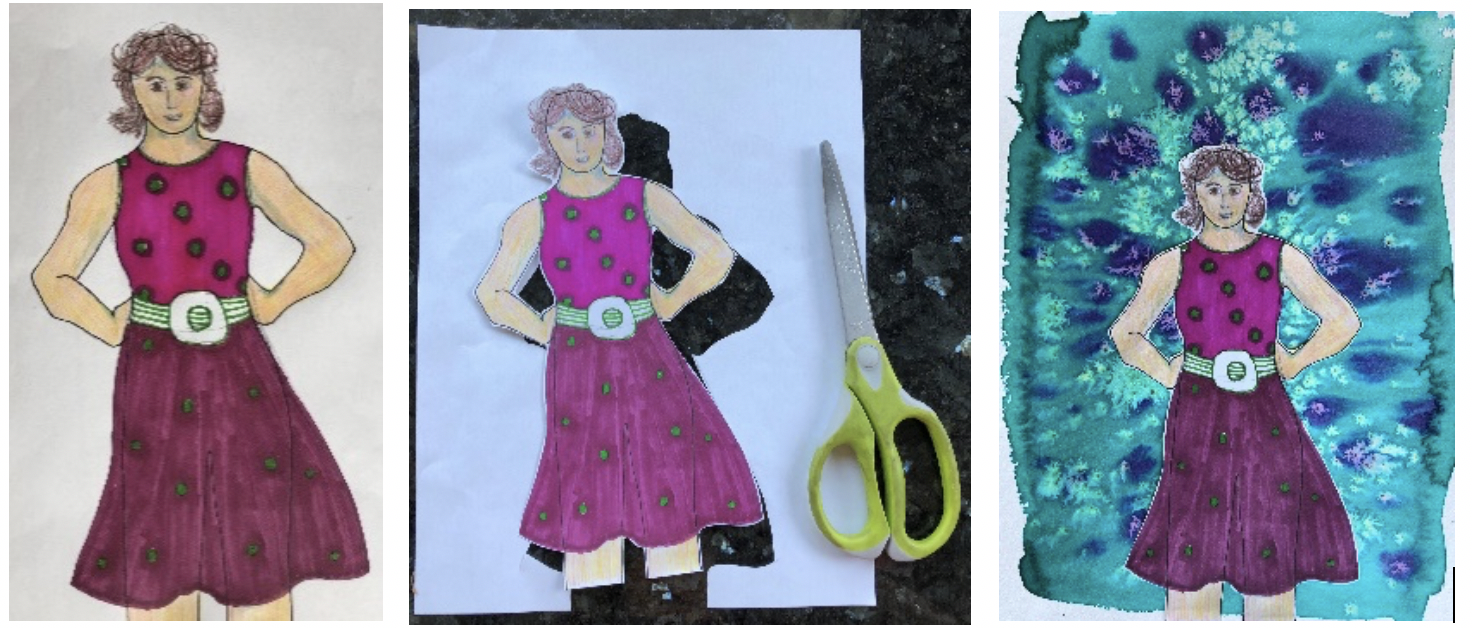After observing the art of Amy Sherald, students will use watercolor, colored pencil and pen to create a portrait in her style. Recommended for 3rd Graders.
Color: the visible range of reflected light. HUE: its name; VALUE: its tints/shades; INTENSITY: its brightness/dullness.
Emphasis (focal point): the part of an artwork that is emphasized in some way and attracts the eye and attention of the viewer; also called the center of interest.
Craftsmanship: A way of working that includes following directions, demonstrates neatness and the proper use of tools.
Monochrome: having or appearing to have only one color, which may include variations on the value of that color.
Portrait: works of art that record the likenesses of humans or animals.
Tint: a value created by adding white to a color
Wash: a painting technique that leaves a semi-transparent layer of color. A wash of diluted ink or watercolor paint applied in combination with drawing (on dry painting) is called pen and wash, wash drawing, or ink and wash.

Amy Sherald, (American b. Columbus, GA 1973) received degrees in painting from 2 different colleges. She was an International Artist-in-Residence in Panama. Sherald was the first woman to win the Outwin Boochever Portrait Competition grand prize. She painted former First Lady Michelle Obama’s official portrait. It hangs in the National Portrait Gallery in Washington DC. Her style is simplified realism. She uses neutral colors to portray skin tones as a way of “challenging the concept of color-as-race.” It’s her goal to document the African-American experience in the United States through large-scale portraits, often working from photographs of strangers she encounters on the streets.

What do you notice about Amy Sherald’s portraits? (Her backgrounds look flat with subtle visual texture; the clothing uses strong hues and often has patterns, the main emphasis is on the person; the person is often looking at the viewer, the skin is often gray.)
How does she use emphasis? (She makes the person the main part of the painting. She has little detail in the background.)
What do you think she is saying with these portraits? (Learn about the person through the expression, details, colors, patterns and textures.)
Why do you think she uses a gray skin tone? (To question the idea of skin tone as important.)
When you create your portrait what colors and patterns do you want to use? What about the background, smooth or textured? (Give them the options of the colors you have for washes; you don’t have to offer every color).
How will those colors and patterns reflect the person you have chosen? (Mood, personality.)
Students will:
Background painting:
Before students arrive:





Lesson written by Juliette Ripley-Dunkelberger. Artist bio from Artist Amy Sherald's website.
21st Century Thinking Skills
Thinking flexibly, persisting, questioning, creating, innovating, listening with empathy, taking responsible risks, observing, making connections, visualizing, sequencing, predicting, comparing/contrasting, determining main idea, finding evidence, problem solving, cause and effect, determining point of view, decision making.
WA State Learning Standards
(VA:Cr1.1.3) a. Elaborate on an imaginative idea.
(VA:Cr1.2.3) a. Apply knowledge of available resources, tools, and technologies to investigate personal ideas through the artmaking process.
(VA:Cr2.1.3) a. Create personally satisfying artwork, using a variety of artistic processes and materials, this happens if they choose to portray a real person.
(VA:Cr2.2.3) a. Demonstrate an understanding of the safe and proficient use of materials, tools, and equipment for a variety of artistic processes.
(VA:Cr3.1.3) a. Elaborate visual information by adding details in an artwork to enhance emerging meaning.
(VA:Pr6.1.3) a. Identify and explain how and where different cultures record and illustrate stories and history of life through art.
(VA:Re7.1.3) a. Speculate about processes an artist uses to create a work of art.
(VA:Re7.2.3) a. Determine messages communicated by an image.
(VA:Re8.1.3) a. Interpret art by analyzing use of media to create subject matter, characteristics of form, and mood.
(VA:Cn11.1.3) a. Recognize that responses to art change depending on knowledge of the time and place in which it was made.
Arts Integration Opportunities
Science: Capillary action when watercolors are applied to wet watercolor paper. What is happening when we add salt to the watercolor?
Please note: These lesson plans are intended for non-profit use only. Use of these plans for commercial purposes should give attribution to the Issaquah Schools Foundation and be accompanied by a nominal donation at www.isfdn.org/donate. Thank you.
Fueling Success for Every Student, Every School